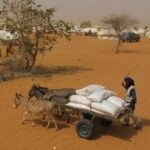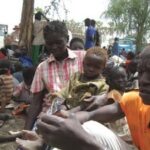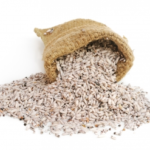Many people are accustomed to having three meals a day. Imagine though if you were allowed just one meal a day for an extended period of time. How would this affect your health, your work? If you were a child how would you be able to go to school and learn?
In Afghanistan, because of a severe drought last year, many already impoverished people were forced to cut back on their daily food intake. The UN World Food Programme (WFP), with support from the U.S. Food for Peace plan, is providing life-saving aid to millions of hungry Afghans as part of a drought relief operation.
Little rain meant Afghans could not grow enough food to support themselves. When drought strikes the impoverished, they have little to fall back on. The drought causes a spiraling disaster.
An Oxfam press release last November reported that “Families are coping by cutting down their meals, borrowing money and even migrating to Iran or Pakistan. Some 90 per cent of households in the affected area are now living in debt after borrowing money to buy food, and schools have closed as children are being put out to work.”
WFP’s Silke Buhr recently visited one of the food distributions in Samangan, which was one of 14 Afghan provinces struck by the drought. Buhr says WFP distributed a wheat ration which was the result of the U.S. Food for Peace donation. The wheat was purchased in Kazakhstan in order cut the shipping distance down as much as possible.
It was last October that the U.S. Food for Peace program made a $40 million donation to WFP’s Afghanistan relief mission. Food for Peace, which originally started during the Eisenhower administration, has long been the U.S.’s main tool for fighting global hunger. Food for Peace makes donations to support the hunger relief work of WFP as well as other agencies like Catholic Relief Services and Save the Children.
In Afghanistan Food for Peace donations are desperately needed. Even before the drought struck there were at least seven million Afghans suffering from hunger, and many others on the brink of what is called “food insecurity.” Hunger and malnutrition were already a crisis in Afghanistan and the recent drought has made the situation even worse.
Food for Peace and WFP can make the difference for Afghanistan moving toward peace and development. It’s all about the food. Without a base of food security no progress can be made in Afghanistan.
Emergency relief to drought-impacted persons is just the start. Support for the small farmers so they can withstand drought, food for education for children, and food for work to build roads are all critical to Afghanistan turning the corner.
It comes down to funding. Right now WFP needs a significant amount of donations to carry out its 2012 relief mission in Afghanistan.
The recent Food for Peace and WFP collaboration is promising. But will there be enough of it to turn the tide for hungry Afghanistan? It will be up to the political will of the international community to use food to build peace.
Article first published as U.S. Food for Peace and WFP Feeding Hungry Afghans on Blogcritics.





